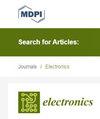Vehicle-UAV Integrated Routing Optimization Problem for Emergency Delivery of Medical Supplies
IF 2.6
3区 工程技术
Q2 COMPUTER SCIENCE, INFORMATION SYSTEMS
引用次数: 0
Abstract
In recent years, the delivery of medical supplies has faced significant challenges due to natural disasters and recurrent public health emergencies. Addressing the need for improved logistics operations during such crises, this article presents an innovative approach, namely integrating vehicle and unmanned aerial vehicle (UAV) logistics to enhance the efficiency and resilience of medical supply chains. Our study introduces a dual-mode distribution framework which employs the density-based spatial clustering of applications with noise (DBSCAN) algorithm for efficiently clustering demand zones unreachable by conventional vehicles, thereby identifying areas requiring UAV delivery. Furthermore, we categorize the demand for medical supplies into two distinct sets based on vehicle accessibility, optimizing distribution routes via both UAVs and vehicles. Through comparative analysis, our findings reveal that the artificial bee colony (ABC) algorithm significantly outperforms the genetic algorithm in terms of solving efficiency, iteration counts, and delivery speed. However, the ABC algorithm’s tendency toward early local optimization and rapid convergence leads to potential stagnation in local optima. To mitigate this issue, we incorporate a simulated annealing technique into the ABC framework, culminating in a refined optimization approach which successfully overcomes the limitations of premature local optima convergence. The experimental results validate the efficacy of our enhanced algorithm, demonstrating reduced iteration counts, shorter computation times, and substantially improved solution quality over traditional logistic models. The proposed method holds promise for significantly improving the operational efficiency and service quality of the healthcare system’s logistics during critical situations.紧急运送医疗用品的车辆-无人机综合路由优化问题
近年来,由于自然灾害和公共卫生突发事件频发,医疗用品的运送面临重大挑战。为了满足在此类危机中改善物流运作的需求,本文提出了一种创新方法,即整合车辆和无人机(UAV)物流,以提高医疗供应链的效率和弹性。我们的研究引入了一种双模式配送框架,该框架采用基于密度的带噪声应用空间聚类(DBSCAN)算法,对传统车辆无法到达的需求区域进行有效聚类,从而确定需要无人机配送的区域。此外,我们还根据车辆的可达性将医疗用品需求分为两类,通过无人机和车辆优化配送路线。通过比较分析,我们的研究结果表明,人工蜂群算法(ABC)在求解效率、迭代次数和配送速度方面明显优于遗传算法。然而,人工蜂群算法倾向于早期局部优化和快速收敛,这可能会导致局部最优停滞。为了缓解这一问题,我们在 ABC 框架中加入了模拟退火技术,最终形成了一种完善的优化方法,成功克服了过早局部最优收敛的局限性。实验结果验证了我们改进算法的有效性,与传统的逻辑模型相比,迭代次数减少,计算时间缩短,解质量大幅提高。所提出的方法有望在危急情况下显著提高医疗系统物流的运行效率和服务质量。
本文章由计算机程序翻译,如有差异,请以英文原文为准。
求助全文
约1分钟内获得全文
求助全文
来源期刊

Electronics
Computer Science-Computer Networks and Communications
CiteScore
1.10
自引率
10.30%
发文量
3515
审稿时长
16.71 days
期刊介绍:
Electronics (ISSN 2079-9292; CODEN: ELECGJ) is an international, open access journal on the science of electronics and its applications published quarterly online by MDPI.
 求助内容:
求助内容: 应助结果提醒方式:
应助结果提醒方式:


